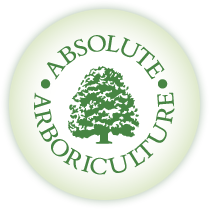Epicormic Growth
New growth arising from dormant or new buds directly from main branches/stems or trunks.
Cable Bracing
Bracing is a term used to describe the installation of cables, ropes and/or belts to reduce the probability of failure of one or more parts of the tree structure due to weakened elements under excessive movement.
Cavity
A void within the solid structure of the tree, normally associated with decay or deterioration of the woody tissues. May be dry or hold water, if the latter it should not be drained. Only soft decomposing tissue should be removed if necessary to access the extent. No attempt should be made to cut or expose living tissue.
Co-dominant Stems
Two or more, generally upright, stems of roughly equal size and vigour competing with each other for dominance. Where these arise from a common union the structural integrity of that union should be assessed.
Coppicing
The cutting down of a tree within 300mm (12in) of the ground at regular intervals, traditionally applied to certain species such as Hazel and Sweet Chestnut to provide stakes etc.
Crown
The foliage bearing section of the tree formed by its branches and not including any clear stem/trunk.
Deadwood
Non-living branches or stems due to natural ageing or external influences. Deadwood provides essential habitats and its management should aim to leave as much as possible, shortening or removing only those that pose a risk. Durability and retention or deadwood will vary by tree species.
Decline
When a tree exhibits signs of a lack of vitality such as reduced leaf size, colour or density.
Dieback
Tips of branches exhibit no signs of life due to age or external influences. Decline may progress, stabilise or reverse as the tree adapts to its new situation.
Dormant
The inactive condition of a tree, usually during the coldest months of the year when there is little or no growth and leaves of deciduous trees have been shed.
Formative Pruning
Minor pruning during the early years of a tree’s growth to establish the desired form and/or to correct defects or weaknesses that may affect structure in later life.
Fungi/Fruiting Bodies
A memeber of the plant kingdom that may colonise living or dead tissues of a tree or form beneficial relationships with the roots. the fruiting body is the spore bearing, reproductive structure of that fungus. Removal of the fruiting body will not prevent further colonisation and will make diagniosis and prognosis harder to determine. Each colonisation must be considered in detail by a competent person to determine the long term implications of tree health and structure when considered alongside the tree sepcies, site usage etc.
Pollard
The initial removal of the top of a young tree at a prescribed height to encourage multistem brancing from that point, traditionally for fodder, firewood or poles. Once started, it should be repeated on a cyclical basis always retaining the initial pollard point, or boiling as it becomes known.
Retrenchment Pruning
A form of reduction intended to encourage development of lower shoots and emulate the natural process of tree aging.
Crown Cleaning
this simply means removing deadwood and crossing branched
TPO
Tree Preservation Order. This protects trees over a defined area and means that where there is a TPO you will need the local authority’s permission to remove a tree or perform any tree surgery.
Stump Grinding
Removing a tree stump 4 to 6 inches below ground level using a stump grinder
